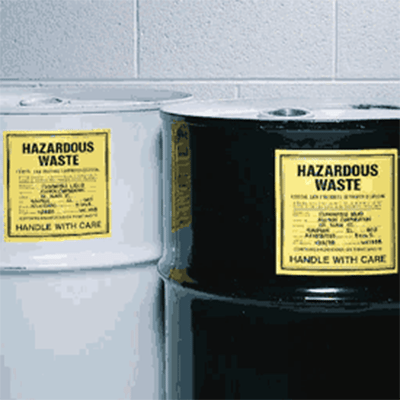
Throughout the coming weeks we will have several posts about container standards and management. Containers storing hazardous waste at permitted facilities are subject to the general facility standards as well as the specific container standards of 40 CFR 264/265.
When the EPA promulgated the unit-specific requirements (container standards), for hazardous waste containers, the Agency emphasized that although mismanagement of containers has caused some of the worst contamination, relatively few regulations would be needed to eliminate most of the problems. Today, I will be writing about some of the basics you need to know in order to maximize your container management efficiency.
To start, it is vital to note that all containers storing hazardous waste must comply with both state regulations and those regulations set forth by the federal government in 40 CFR.
That said, the word container is a bit non-specific. At Heritage, we teach that a container is any portable device in which a material is stored, transported, treated, disposed of, or otherwise handled. Now you may be thinking, “That definition is pretty non-specific too.” That is true. The definition is intentionally broad so that it can encompass all the different types of portable devices that may be used to handle hazardous waste, such as:
- Drums,
- Pails,
- Tankers, or
- Railcars, among possible others.
After looking into what items are available in which to store hazardous waste, we need to determine the definition of “storage.” Storing hazardous waste means holding it for a temporary period until it is treated, disposed of, or moved elsewhere. Again, this definition is intentionally broad in order to include any situation in which hazardous waste is held for any period of time.
It is important to remember that this information may not be all-inclusive and it is always best to check 40 CFR and your state regulations for the most up-to-date information. Keep checking the blog for future posts about container design and compatibility.
More News From Heritage
-
3/12/24
Equal Pay Day – Spotlighting Our Female Drivers
-
3/8/24
International Women’s Week Spotlight – Shannon Dippel
For International Women's Week, we're spotlighting some of the incredible women in the Heritage family. Our final spotlight is Shannon Dippel.
-
3/8/24
International Women’s Week Spotlight – Susan Adams
For International Women's Week, we're spotlighting some of the incredible women in the Heritage family. Our sixth spotlight is Susan Adams.
-
3/7/24
International Women’s Week Spotlight – Lea Wilson
For International Women's Week, we're spotlighting some of the incredible women in the Heritage family. Our fifth spotlight is Lea Wilson
-
3/7/24
International Women’s Week Spotlight – Melissa Fisk
For International Women's Week, we're spotlighting some of the incredible women in the Heritage family. Our fourth spotlight is Melissa Fisk.
-
3/6/24
International Women’s Week Spotlight – Taylor Harvey
For International Women's Week, we're spotlighting some of the incredible women in the Heritage family. Our third spotlight is Taylor Harvey
-
3/5/24
International Women’s Week Spotlight – Karen Esquivel
For International Women's Week, we're spotlighting some of the incredible women in the Heritage family. Our second spotlight is Karen Esquivel.
-
3/5/24
Heritage Environmental Services Announces HP Nanda as CEO; CEO Jeff Laborsky Transitions to Board of Directors
Heritage Environmental Services (“HES”) announced today that HP Nanda will join the organization as CEO.








